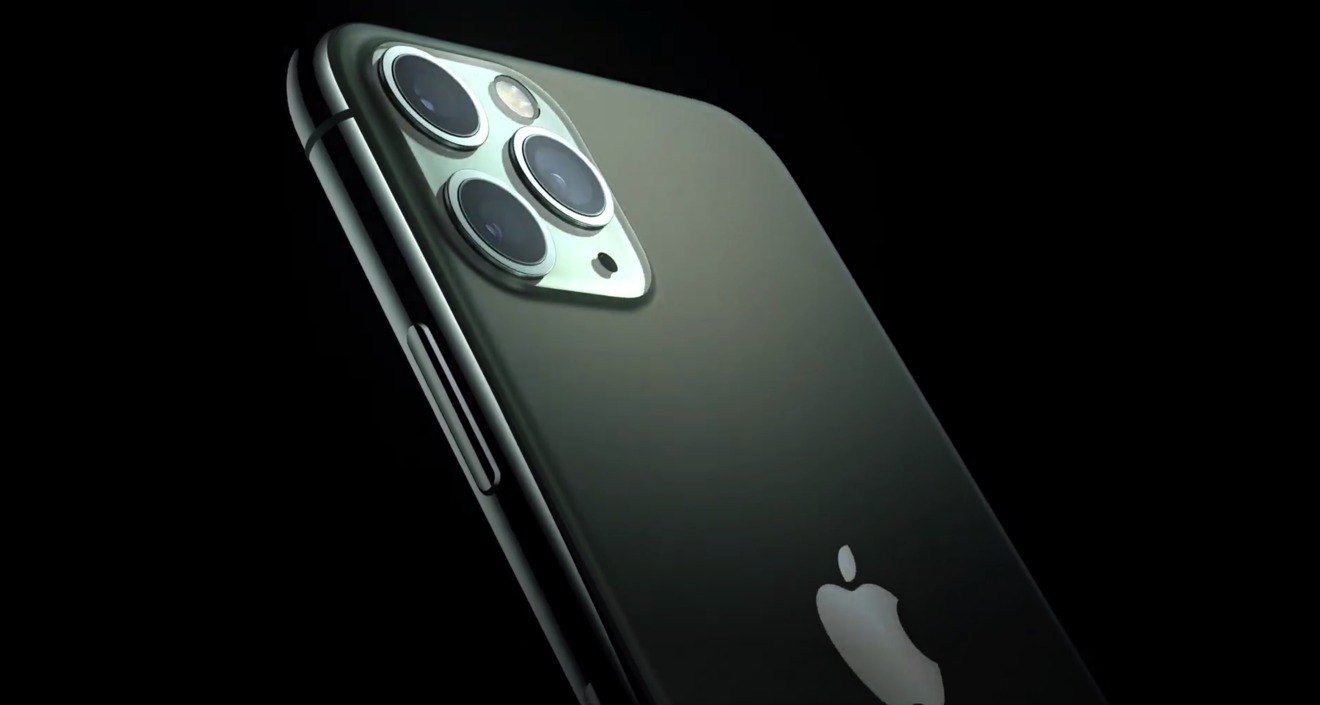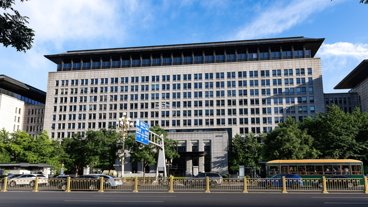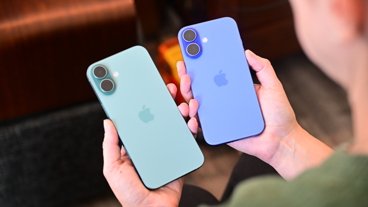Apple has unveiled its 2019 refresh of the OLED-based iPhone models, with the iPhone 11 Pro and iPhone 11 Pro Max an extra rear camera, and extended battery life.
Fundamentally similar to the 2018 iPhone XS and iPhone XS Max, the iPhone 11 Pro and Pro Max were revealed at Apple's "By innovation only" event at the Steve Jobs Theater on Tuesday. Equipped with new Super Retina XDR 5.8-inch and 6.5-inch OLED displays, the new models might look similar to their predecessors, but add significant speed improvements and new functions like novel camera capabilities.
The new triple-camera system brings the expected Ultra Wide, Wide and Telephoto lenses. The Ultra Wide camera captures four times more scene, while the new Wide sensor comes with 100 percent Focus Pixels to enable a Night mode. Together with the software in iOS 13, Night mode greatly improves photos shot in both indoor and outdoor low-light situations.
All three cameras record 4K video at 60 frames per second with what Apple claims is an extended dynamic range and with cinematic video stablization for action videos.
When users switch between the different lenses, the iPhone 11 Pro models have an Audio Zoom feature that matches the audio to the current video framing. The iPhone 11 Pro and iPhone 11 Pro Max also add a new spatial audio feature offering Dolby Atmos and surround sound.
Alongside automatic features such as this, the Photos app in iOS 13 has gained video editing tools to allow rotation, cropping, filters and exposure controls at a touch.
Apple has also improved the battery life of both its iPhone 11 Pro models.
"We are so excited to tell you that with iPhone 11 Pro you get four hours longer in your day," said Phil Schiller. "With iPhone 11 Pro Max, you get up to five hours longer."
As predicted, the iPhone 11 Pro models retain the Lightning connector but Apple is providing the 18W USB-C charger for faster charging. Qi charging remains.
The new Super Retina XDR display is a custom-designed OLED one with up to 1,200 nits brightness, wide color support, system-wide color management and True Tone. It provides a two million-to-one contrast ratio and is more power efficient than its predecessor in the 2018 iPhone XS and iPhone XS Max.
Schiller also presented what he called a sneak peek of Deep Fusion, a feature that is going to be added to the iPhone 11 Pro with a software update later in this fall.
It uses the neural engine of the A13 Bionic processor and machine learning. When you press the shutter button, the camera has already taken four shots and it then takes four more afterwards. The iPhone then analyses 24 million pixels across all these images to optimize for detail and low noise.
"This is the first time a neural engine has been responsible for generating the output image," he said.
The iPhone 11 Pro has the familiar 5.8-inch 2436-by-1125 pixel resolution display, with the Pro Max bumping it up to a 6.5-inch 2688-by-1242 resolution version, with both having an identical pixel density of 458 pixels per inch, with a 2,000,000 to 1 contrast ratio.
Inside both models is the 64-bit A13 Bionic processor, a 7-nanometer chip. For this year's iteration, the A13 has a quad-core GPU and a 6-core CPU, with each offering performance improvements of approximately 20 percent over last year's release, the A12.
Due to the use of an extra camera, the camera bump on the back has been given a makeover, with it taking a square formation to accommodate the additional sensor and lens. The bump is wider than in previous versions, meaning those upgrading from the iPhone XS and iPhone XS Max will be forced to acquire a new case at the very least.
On the front is the TrueDepth Camera array, which is used to power Face ID. The sensor has been upgraded to take 12-megapixel images, as well as providing Portrait Lighting effects including bokeh and depth control, smart HDR, and Animoji and Memoji support.
Both the iPhone 11 Pro and iPhone 11 Pro Max will come in silver, gold, space gray and new midnight green finishes. Regardless of finish, the iPhone 11 Pro will retail from $999, and the iPhone 11 Pro Max begins at $1,099. The phones will ship September 20.
 Malcolm Owen
Malcolm Owen









-m.jpg)






 Christine McKee
Christine McKee
 Charles Martin
Charles Martin
 Mike Wuerthele
Mike Wuerthele
 Marko Zivkovic
Marko Zivkovic



 William Gallagher
William Gallagher


-m.jpg)






171 Comments
Dammit! Now my XS Max is only useful as a paperweight!
It seems it’s 1200 nits brightness compared to the 10s Max’s 728? True???
I wonder if Safari will be faster? ;)
The much longer run time, 4-5 hours longer than last year's models, would imply that reverse charging might have originally been planned afterall as this morning's article suggested.